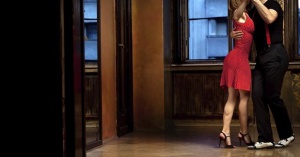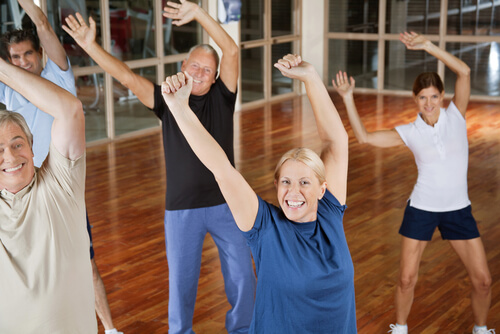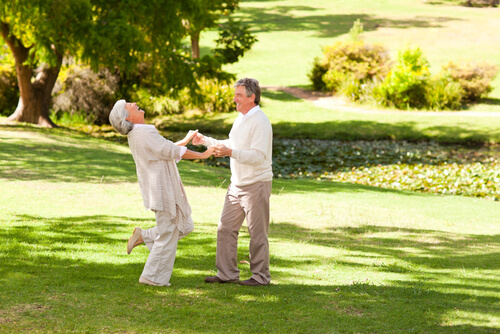10+ Amazing Health Benefits of Dancing


Written and verified by Doctor Carlos Fabián Avila
Dancing is one way that people of all ages stay in shape. Beyond it being fun, dance provides a lot of positive health benefits. Read more about the health benefits of dancing below.
Dancing is one of the ways to truly lighten up some people’s monotonous lives. Emotional, mental, physical, and general health all truly benefit from it.
When someone decides to begin a new way of exercising, they usually think about how much fun it is, and that’s just what dancing is – fun.
Benefits of dancing for general health
Read also: The Health Benefits of Plants in Your Home
1. Helps your heart
Dancing is a wonderful activity for people with the risk of cardiovascular disease. One Italian study showed that people with cardiac failure that practiced dance as a form of exercise, improved their heart health along with respiration.
Their quality of life also improved in a significant way compared to people that rode bicycles or walked on a track for exercise.
2. Weight loss
Weight loss is another one of dancing’s benefits if done continuously. One study in the Journal of Physiological Anthropology found that anaerobic training exercise program for dance is just as useful for weight loss.
3. Increases your energy
Do you lack energy throughout the day? Dancing could help you recover it. One study published in The Scholarly Publishing and Academic Resources Coalition found that a weekly dance program could improve physical performance and energy levels in adults.
4. Improves flexibility, strength, and endurance
Dancing just a few times requires a large amount of flexibility. The majority of dance classes begin with a warm-up that includes several different stretching exercises. When you dance, you have to push yourself to reach a range of movement with all muscle groups.
Dancing increases strength, forcing the muscles to endure against the body’s own weight. A lot of dance styles, including jazz and ballet, require jumping in the air, and jumping requires a tremendous amount of strength in the primary muscles in the leg.
Dance is a physical exercise, which is how it increases endurance. Endurance is the ability of the muscles to work hard for longer periods of time without fatigue. Dancing regularly is perfect for increasing resistance, especially vigorous dance.
Benefits of dancing for emotional health
1. It makes you feel happy
Dancing is something that practically everyone can enjoy doing. If you watch someone while they are dancing, they will surely have a big smile on their face.
Smiling and laughing during the dance is completely natural! This is because it allows you to truly enjoy yourself.
There is no age limit to dancing, unlike other forms of exercise. A person of any age can dance and enjoy the benefits of dance on their health.
2. Eliminate stress and depression
It has been shown that one of the benefits of dance is that it helps prevent mild depression and improves confidence in the dancer. Depression is becoming a greater problem among adolescents and adults of all ages.
One study in the International Journal of Neuroscience found that dance movement therapy not only improves depression, but it also reduces stress psychology by regulating serotonin and dopamine levels in the body.
Given that dancing is a social activity, it helps with feelings of loneliness that people suffering from depression may feel, and sometimes, elderly people who live alone.
3. Improves confidence and self-esteem
Dancing also helps improve confidence. Every time you learn a new dance step, you experience an increase in confidence, and your energy levels increase. This increase in confidence is then transferred to all aspects of your life.
Dancing is a social activity. Studies have shown that strong social ties and socialization with friends contribute to high self-esteem and a positive attitude.
Dancing provides a lot of opportunities to get to know other people. Joining dance classes can increase your self-esteem and develop social abilities.
Because physical exercise reduces stress and tension, dancing gives you a general sensation of well-being.
Read also: The Amazing Benefits of Eating Nuts
Benefits of dancing for mental health
1. Improves memory
According to a study in the New England Journal of Medicine, dancing can increase your memory and prevent the appearance of dementia as you grow older.
Science has revealed that aerobic exercise can revert the loss of the hippocampus’ volume, the area of the brain that controls memory. The hippocampus naturally shrinks during adult age, which frequently leads to memory problems, and sometimes dementia.
2. Fight Alzheimer’s disease
One study with elderly participants, published in the New England Journal of Medicine, found that frequent dancing helps prevent the effects of Alzheimer’s and other forms of dementia. It can also increase mental clarity for people of all ages.
It has also been shown that people with Alzheimer’s disease are able to remember forgotten memories when they dance to music that they used to know.
4. Increases intelligence
For centuries, dance manuals and other written texts have praised the health benefits of dancing, generally as a form of physical exercise. Now, thanks to studies, it has been shown to increase intelligence. The essence of intelligence is decision making.
The best advice, in regards to mental clarity, is to get involved in activities that require you to make quick decisions (within seconds).
So in order to increase your intelligence in the area of memorization, all you need to do is work on your physical style of dance.
One way of doing this is by learning something new. Not only dance but anything that’s new.
By taking dance classes you could challenge your mind and stimulate the connectivity between the brain, generating a need for more routes.
Difficult classes are the best, because they provoke you to need more new neuron connections, therefore increasing your neural connectivity.
What type of music should I dance to?
There are lots of dance styles; jazz, salsa, merengue, bachata, reggaeton, zumba, hip-hop, ballet, contemporary, etc. These are all different types of music.
Every form of dance is equally beneficial. Dancing can help you in a lot of ways.
All dancing styles are equally effective, all you need to decide on is which style of dance you like most, and practice it routinely to get the health benefits of dancing.
All cited sources were thoroughly reviewed by our team to ensure their quality, reliability, currency, and validity. The bibliography of this article was considered reliable and of academic or scientific accuracy.
- Belardinelli, R., Lacalaprice, F., Ventrella, C., Volpe, L., & Faccenda, E. (2008). Waltz dancing in patients with chronic heart failure: new form of exercise training. Circulation. Heart Failure, 1(2), 107–114. https://doi.org/10.1161/CIRCHEARTFAILURE.108.765727
- Stillman, C. M., Donahue, P. T., Williams, M. F., Callas, M., Lwanga, C., Brown, C., … Erickson, K. I. (2018). Weight-Loss Outcomes from a Pilot Study of African Dance in Older African Americans. Obesity, 26(12), 1893–1897. https://doi.org/10.1002/oby.22331
- Douka S, Zilidou VI, Lilou O, Manou V. Traditional Dance Improves the Physical Fitness and Well-Being of the Elderly. Front Aging Neurosci. 2019;11:75. Published 2019 Apr 5. doi:10.3389/fnagi.2019.00075
- Murrock, C. J., & Graor, C. H. (2014). Effects of dance on depression, physical function, and disability in underserved adults. Journal of Aging and Physical Activity, 22(3), 380–385. https://doi.org/10.1123/JAPA.2013-0003
- Borhan A, Hewston P, Merom D, et al. Effects of dance on cognitive function among older adults: a protocol for systematic review and meta-analysis. Syst Rev. 2018;7(1):24. Published 2018 Jan 27. doi:10.1186/s13643-018-0689-6
- Klimova, B., Valis, M., & Kuca, K. (2017). Dancing as an Intervention Tool for People with Dementia: A Mini-Review Dancing and Dementia. Current Alzheimer Research, 14(12). https://doi.org/10.2174/1567205014666170713161422
This text is provided for informational purposes only and does not replace consultation with a professional. If in doubt, consult your specialist.











